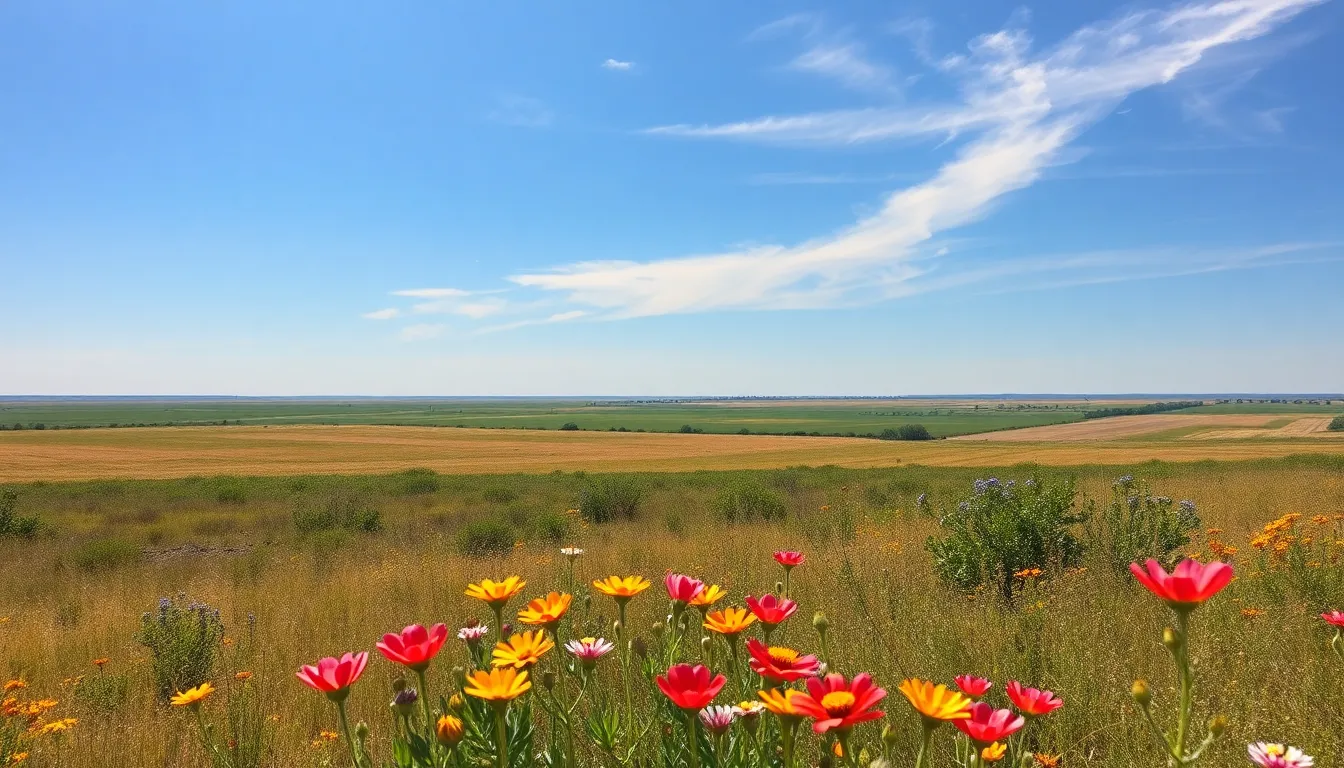In Texas, the changing of the clock marks more than just a shift in time; it signals the arrival of longer days and a fresh season. As daylight saving time approaches, residents often wonder when exactly the hour will change and how it affects their daily routines.
Typically, Texas observes daylight saving time, moving the clock forward in spring and back in fall. This twice-a-year ritual can cause confusion, but understanding the specific dates and implications helps everyone adjust smoothly. Whether it’s planning events or simply getting used to the new schedule, knowing when the hour changes is essential for Texans.
Table of Contents
ToggleOverview of Time Change in Texas
Texas alters its clocks twice each year as part of daylight saving time. The transition occurs on the second Sunday in March, when clocks spring forward one hour at 2:00 AM, marking the beginning of daylight saving time. This change extends daylight into the evening, supporting outdoor activities and energy conservation.
On the first Sunday in November, Texas falls back one hour at 2:00 AM, reverting to standard time. This adjustment results in an earlier sunset and shorter daylight hours during the winter months.
Awareness of these specific dates is essential for Texas residents to ensure timely adjustments to schedules, appointments, and events. Confusion often arises, so understanding these transitions helps mitigate disruptions in daily routines. Texas consistently observes daylight saving time, aligning with the majority of the United States, although some areas may not participate.
Historical Context

Understanding the origins and context of daylight saving time helps clarify its significance in Texas and across the nation. This section delves into the roots of the practice and its geographical implications within Texas.
Daylight Saving Time Origins
Daylight saving time (DST) first emerged in the early 20th century, primarily during World War I as a measure to conserve fuel. Germany implemented it in 1916, followed by the United States in 1918. The initial idea focused on extending evening daylight to reduce energy consumption. After the war, its popularity declined, but the energy crisis of the 1970s led to renewed interest. The Uniform Time Act of 1966 standardized DST practices across the U.S., allowing states to opt in or out. Texas adopted DST, aligning with the majority of the country, reflecting the nationwide preference for longer daylight hours in the evenings.
Texas and Time Zones
Texas occupies two major time zones: Central Standard Time (CST) and Mountain Standard Time (MST). Most of Texas observes CST, while the far western region, including El Paso, follows MST. The state observes daylight saving time alongside the Central Time Zone, making the transitions consistent with neighbors. This alignment aids in synchronizing activities across state borders. Despite some confusion, Texans adapt to these changes, primarily governed by federal law but allowing for local variations. Understanding time zone distinctions ensures residents effectively manage appointments and daily routines throughout the year.
Current Time Change Policy
Texas observes a structured time change policy, adhering to the daylight saving time (DST) practice, which affects daily schedules and activities throughout the year.
Standard Time vs. Daylight Saving Time
Texas distinguishes between standard time and daylight saving time. Standard Time refers to Central Standard Time (CST) during the fall and winter months, when clocks are set back one hour, resulting in earlier sunsets. Daylight Saving Time shifts time forward by one hour in spring, referred to as Central Daylight Time (CDT), promoting longer evening daylight and enhancing outdoor opportunities. This adjustment fosters energy conservation by reducing reliance on artificial lighting.
Dates for Time Changes
Texas adheres to specific dates for clock changes:
| Change Event | Date | Time |
|---|---|---|
| Start of Daylight Saving | Second Sunday in March | 2:00 AM CDT |
| End of Daylight Saving | First Sunday in November | 2:00 AM CST |
During these transitions, residents set their clocks forward or back one hour, which is essential for planning and scheduling activities. Understanding these specific dates helps Texans adjust their routines accordingly, minimizing confusion surrounding time changes.
Impacts of Time Changes
Time changes significantly affect daily life and economic conditions. Texas residents experience various adjustments in routines and activities during these transitions.
Effects on Daily Life
Time changes create notable shifts in daily life. People might experience disrupted sleep patterns due to the clock adjustments. Morning commutes may become darker in the fall as daylight decreases, affecting visibility and safety. Conversely, longer daylight hours in the evening during spring offer opportunities for outdoor activities and social gatherings. Scheduling appointments, meetings, and events requires careful planning to accommodate the time changes, which can lead to confusion if individuals overlook the actual clock adjustments.
Economic Considerations
Economic implications arise from time changes. Retailers often observe increased sales during daylight saving time due to extended shopping hours in natural daylight. Energy consumption patterns also shift, with studies indicating a reduction in electricity usage during DST as people take advantage of the longer evenings. However, businesses may face challenges in adapting to altered employee schedules and disruptions to productivity. Understanding these economic factors allows Texans to navigate transitions more effectively, ensuring minimized impacts on personal and professional activities.
Public Opinion on Time Change
Public opinion on the time change in Texas reveals varying attitudes toward daylight saving time (DST). Many residents express strong feelings regarding the clock adjustments, influencing legislative discussions and potential changes to state policy.
Survey Results
Surveys indicate a significant division in opinions on daylight saving time. Approximately 60% of Texans favor abolishing DST, citing health impacts and inconveniences associated with the biannual clock changes. Many participants in surveys report feelings of fatigue and difficulty adjusting to altered sleep patterns. Conversely, around 30% of respondents support maintaining the current system, emphasizing benefits like extended evening daylight for outdoor activities. A minority, about 10%, remains indifferent to the time change, reflecting a balance of perspectives among Texas residents.
| Opinion | Percentage |
|---|---|
| Favor abolishing DST | 60% |
| Support current system | 30% |
| Indifferent | 10% |
Legislative Discussions
Legislative discussions surrounding daylight saving time in Texas have gained traction in recent years. Lawmakers have proposed various bills aimed at either adopting permanent daylight saving time or eliminating DST altogether. In 2021, a bill seeking to end the practice received substantial support but ultimately did not pass. Advocacy groups promote awareness on the potential benefits of staying on standard time year-round, focusing on health, safety, and economic considerations. Continued discussions remain essential as public sentiment shifts, reflecting evolving attitudes toward time management in Texas.
Understanding when the clocks change in Texas is crucial for residents to adapt their schedules effectively. The transition into and out of daylight saving time not only affects daily routines but also influences social activities and economic conditions. As discussions around the future of DST continue, Texans must stay informed about potential changes to ensure a smooth adjustment. By being aware of the specific dates and implications of these time shifts, individuals can better manage their personal and professional lives, minimizing disruptions and maximizing the benefits of extended daylight.



